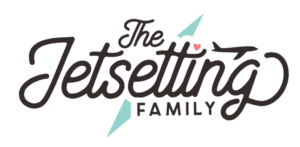After a few days in Washington D.C., we fell in love with the city’s rich history, massive variety through all the different museums and monuments, and relatively calm vibe. Check out this episode to get our thoughts on what the top things to do with kids in Washington D.C. are!
Listen and Subscribe on: Apple Podcasts, Spotify, Google Podcasts
Transcript
Jess: Welcome to the Jetsetting Family Travel Podcast. I’m Jess. And I’m Rod. And I’m excited to be back with you guys this week so that Rod and I can tell you all about our beautiful nation’s capital.
Rod: Yeah, we went to Washington DC at the tail end of our summer trip back in June of 2023. Spent, what was it, six days around there exploring the city, going to see a lot of cool museums, a lot of nice waterfront types of views. Great monuments.
So we’re excited to tell you what our top things to do are, and I guess we’ll start right away. Jess, what do we have for number one or whatever?
Jess: Well, I guess I’m going to start more with where the planning begins, because there’s a few things that you have to plan in advance if you’re going to D. C. and there are items you want to do.
So for example, you can request a free White House tour, which is a really cool experience if you can get in and this is something you’re going to request through your local representatives, your congressman, your senator, and you can do it up to 90 days in advance to going to D. C. I wanted to do a White House tour.
We got a little lucky. I had a cousin working in the city who gave us a tour of the Eisenhower building of the White House of the White House. But the official White House tour, we applied for, I think two or three weeks in advance and it was no longer available. So I’d really push if you know, you’re going there or three months out, you should be applying for the White House tour.
Now the Capitol tour, we applied for about two to three weeks out and we did get tickets to the Capitol. And it was really, really cool. We got to go to our local representatives. Office see where they work out of. We had a guided tour with one of his staffers through the Capitol. And because we had a guided tour we were able to see a couple areas of the Capitol that are normally close to the public, which was really, really cool. And we actually, I applied through. A senator and a congressman. I don’t know if you’re supposed to do that, but we ended up getting two capital tickets sent to us. One was on a group tour and one was through a private tour. So we ended up canceling the group tour one and taking the private tour one.
And I thought it was really cool because he was great with the kids and we got a lot of insight like that interested us. I think he could kind of tell what interested us and what we kind of weren’t as intrigued by.
Rod: Yeah, yeah, our staffer had a lot of not inside knowledge, but a lot of just information about the age of the buildings, the different little secrets, I guess, that are hidden throughout the capital.
You know, I think there’s 1 where they’re talking about. There was a big grate on the floor and what’s now A/C coming out of there. Back then, before there was AC, they, they would just to put a, they used to put a bunch of ice blocks there to keep the building cool because Washington DC in the summer was is really hot.
So it was just those little details that made it
Jess: interesting. I think it kept the kids entertained. He was like, look here, how there’s. cat imprints on the floor. There was like a ghost cat, supposedly. He tried to have the kids find one of the statues in the Rotunda area that only had one ear. I mean, I just think it made it a little bit more fun.
But if you want to get these tours, I would definitely do them. 90 days, or as close to 90 days out as possible if you’re traveling. One of the tours I really wanted to do with the kids that was closed currently is the Treasury Building, but I hear that’s a lot of fun. So it’s another one I’d look into a tour if you’re going.
And the Library of Congress.
Rod: Yeah, so the Library of Congress is attached, I guess it’s by Underground Tunnel, so it’s about a block away from the Capitol Building. And you can take an underground tunnel that’ll take you directly to the library of Congress. I guess there’s all kinds of like underground tunnel systems that are connecting all of these buildings, which makes sense.
Because a lot of Congressmen, they don’t want to be up in the surface and traffic and all of that.
Jess: And the heat, it was pretty hot out. So the underground tunnel was wonderful. Something to note at Library of Congress that’s exciting is, and I don’t know, I should have asked if this is all the time, but when we went, they handed out scavenger hunts for the kids.
And so that kind of kept them entertained. It was just a little pamphlet and they could look for different little objects that were engraved or painted throughout the Library of Congress.
Rod: Yeah, that was done by the volunteers there. The actual library portion of it. It’s kind of in the middle. I think that one was closed when we went.
I think there’s certain reservations you can make to get a guided tour of the actual library portion itself. There’s a couple of other exhibits on the outside that you can walk through and see some art and some other types of literary works. But having access to the actual library, you’re going to have to check in advance to see if you can get tickets to go into that central area.
Jess: Yes, but something beautiful about Washington D. C. is if you aren’t able to plan ahead or you forget and procrastinate, there is a lot to do that you don’t need to plan ahead super far in advance, and there are a lot of free things to do in the city. So if you don’t plan ahead, don’t stress. You could still have a lot of fun.
One of the other tours we had to book, but I don’t think you need to book it out so far in advance. And I think it was the highlight of all of the places we went. I think the kids loved it was the spy museum.
Rod: Yeah, the international spy museum. It’s an experience. It’s immersive and it’s very much like a self-guided tour.
I won’t spoil the, the surprises that happened during it, but there is a certain, I’d say role playing element where you begin, you’re given a cover. And there’s little interactive stations throughout the museum where you’re constantly being quizzed on your cover, right? What your fake name is, where you’re from, what your occupation is, and then you’re given a mission.
And throughout, as you’re walking around, you’re seeing the exhibits. There’s also these interactive stations where you scan the little card that you’re given. It remembers the choices that you’ve made in the past. It takes you through the story of how your mission is going. You do little puzzles and games on that interactive station.
And then at the end, you either, complete or you don’t complete your mission and it gives you scores or sports or parts where you get pictures, where you can get those emailed to you. So that part of it was really cool. But even if you. Don’t want to do that. The exhibits themselves were really, really interesting.
You’re walking through seeing replicas or the real kind of spy tools that they use a lot of different disguises, famous spies in history. And there’s all, all kinds of different little areas where you’re have four-to-five-minute movies on a specific spy history or a spy theme thing. For example, there’s 1 of like, oh, here’s all the spies that have been in movies and here’s where the inspirations for their characters came from and all of that.
So you could easily spend the whole day in there if you want to browse and read through everything. I think we were there maybe two to three hours and I feel like we got about halfway through. I mean, the kids, they, they want to do all the interactive stuff. They didn’t, weren’t necessarily interested in reading every single exhibit or description that’s at the museum.
Jess: So I think we did three hours, but we could have easily spent a couple more hours. had we wanted. And I think all of us really enjoyed it. I wanted to highlight that even though I said you have to book going back the White House Capitol and Library of Congress, you have to have a reservations for those, but they’re all free.
The Spy Museum was one of the few things we actually paid for. These are tickets you need to book a time slot and you’re going to pay to get in. And the tickets are about 30 for an adult and 20 for kids. Six and under are free. It was one of the few things I feel like we actually paid to do in the city because while other things take reservations, it’s free.
I think they’re just trying to, since COVID, like crowd manage.
Rod: Yeah. No, I think that’s a private, also a private company that owns that museum. So it’s more of a for profit thing as compared to all the Smithsonian museums. I could be wrong about that, but I think that is why that one costs money and the others don’t.
Jess: Speaking of the Smithsonian museums, all of those are free, but it’s very important to note that some of the more popular ones are going to need an advanced reservation. The Air and Space Museum, we had gone to it previously, so it wasn’t top of our list, but it is an incredible, incredible museum for kids.
We tried to go while there this time and that one did require a reservation and there were none left. So we’re not able to get in this past trip, but that’s one that requires a reservation. The National Museum of American or African American history requires a reservation. And I believe there was one more that I can I recall hearing, but there are still a lot of really cool museums that don’t require reservations. We went to the Postal Museum that made a lot of blogs list is top things to do with kids. And I would say personally, I thought it was okay. It was okay. It wouldn’t be at the top of my list. Like if you have an extra day and are looking to fill it with something to do great.
Rod: Yeah, I think there’s a, it’s, there was an interesting level of history of knowing how mail was delivered in the past. And they had an old rail car where the mail used to get sorted. And then he gets to get tossed out of this train on bags on with these tools. So that was cool to learn and see how technology has made the mail system more efficient there. There was a big exhibit there on baseball and stamps and you know, capturing the baseball culture through the mail system and the stamps. And since we’re not big baseball fans, that didn’t really appeal to us necessarily.
Jess: I just think out of all the museums, it wouldn’t top my list.
But it’s still like, if you’re looking for something to fill time, it’s worth going.
Rod: Yeah, if you’re a stamp collector too, there’s a massive room where it’s pretty much almost, I I’m, I’m guessing it was all of the stamps that have ever been created by the U S Postal Service are available to see there.
There’s a digital version of it. There’s also a little station where you can like browse through and pick and take some stamps home for free. So I think it was interesting as just not as interactive and as like attention grabbing as some of the other museums that we went to, for example, we also went to the Natural History Museum.
That one we could have spent all day on, but we had a limited amount of time.
Jess: That one’s amazing for kids. So much to learn so many hands-on exhibits. Just, I mean, That one’s incredible. That would make the top of my list to me. The air, the Air and Space Museum and the Natural History Museum for children.
Are the two I would prioritize out of those.
Rod: Yeah. Yeah. And there’s little timed events that happen primarily animal encounters. So the kids got to see there was a tarantula that was being fed. So the tarantula got put on the floor. Everyone kind of sat down in a circle and just, just this regular exhibit area.
And they fed, I think it was what, like a grasshopper. They tried to see, it’s like, oh, these tarantulas only eat once a week. So here is the, the feeding of one of the tarantulas. And then there are other, I forgot what, what the other animals they were that they got to like touch and take a look at on these live exhibits.
So it was super interesting. There’s one on cell phones and like how society has changed, with cell phone use, how humans have evolved. There’s all kinds of different animal exhibits from sea life to mammals and the environment. And the history of the Earth. So, and that’s, we, we hardly scratched the surface of that.
It’s amazing, but it was really cool.
Jess: It’s an amazing, amazing museum. Another museum that’s really like I’ve been to once it’s been a long time was the Holocaust Museum is really well known in DC as an incredible, incredible museum. We didn’t go because I feel like the kids are still a little young for that.
But I’ve heard really good things about that, and I’ve heard really good things about the National Museum of African American History and Culture. So those are two. As the kids get older, I think I would love to take them to.
Rod: Yeah, the American History Museum would probably be another good one, especially if you’re doing any sort of guided tours throughout Washington, D. C., where you’re learning about Important moments in American history from the American Revolution through the Civil War. So I’m sure there’s a lot more detail that you can get. And I think that would enrich certain portions of the monument visits that you go see. So, for example, the Lincoln Memorial, right?
Learning who Lincoln was while you’ll get to see when you go to the memorial, you’ll see some of the quotes and the giant marble statue and monument for him. You don’t necessarily get as much of the insight into the kind of actions that he did. So going to the American History Museum as a way to enrich in like the, the monument visits, I think would be a good idea too.
Jess: Yeah. Overall, there’s museums galore. I think you could go to DC and find any type of museum to fit whatever your family’s interests are. And they’re just really, really well done. They’re beautiful. And they’re free. So just make sure that you look in advance if where you want to go needs a reservation or not, because I think that’s still ever changing.
So I don’t want to steer you wrong and you don’t get to go. So I would definitely look into that. But besides that, there’s so much there to enjoy. I think something that impressed me, and maybe it was just because we were in New York City prior to going to Washington DC. And so, like, there was such a vast difference in pace of life and, like, busyness.
I was so impressed with D. C. that, like, the streets were wide. There were so many grass areas you could sit and have a picnic on. There were never crowds when we were there. I mean, a lot of things were out of session when we were there, which means a lot of the politicians and people are gone.
Rod: Congress was not in session.
So, and what, that’s what we were told repeatedly when we mentioned to people, Oh, the city is so calm. It doesn’t feel super trafficky, especially since we were coming back from New York City, as Jess said, so, but they said, oh yeah, that’s because Congress is not in session. So when you come back, let’s check the schedule and see, because it’s a lot more hectic.
When all the politicians, the sand upon the city to go and, going to do their work.
Jess: Yeah. So it was pretty mellow while we were there. You can also the kids love visiting. We went to the Washington Monument and Lincoln Memorial. I was a little bit sad because normally you can walk in between the two and it’s a beautiful walk.
And we were there. The 1st of July or something. And so they were setting up for the 4th of July events. It was all blocked off and we couldn’t make the beautiful walk through like, you know, I think, and Jenny and the whole thing, you cannot, we couldn’t do that walk, but typically you can. And it’s really, really beautiful.
So I think that’s another area. Obviously, if you’re in D. C., it’s a must do. Our kids liked getting ice cream and we sat right there in front of the Washington Monument and had our ice cream and it was just a really, really nice afternoon.
Rod: Yeah. Yeah. Another thing that we did was, we went to the Arlington National Cemetery and since we’re a military family, we’ve always heard, Jess has been there before, but we’ve always heard about the Tomb of the Unknown Soldiers.
We were really curious to see if we can go catch a Changing of the Guard. One thing to note, and, I don’t remember the last time you were there, Jess, but you remember just being able to drive through the cemetery? Yes. That’s no longer possible, so you could walk for free, or you could buy trolley tickets where there’s just, like, little shuttles that take you to the different areas from where some famous, tombstones and burial sites are to the actual Tomb of the Unknown Soldier itself.
So that’s, that’s just another thing where yes, it’s free to enter, but if you really want to make the most of your experience, especially if it’s hot and you don’t want to walk, I think it was one, like a 20-to-25-minute walk to get to the tomb of the unknown soldier up a hill. So, the trolley for us was much more worth it.
We were able to get there in five minutes. And we were able to catch the, the changing of the guard.
Jess: Yeah, it was, it was definitely different from when I went, when I was much younger. I mean, this was a really long time ago where it was more accessible. I think it now is a little harder cause it, the Arlington cemetery.
I mean, it’s just outside of the city. It’s in Arlington. You have to cross. You have to get a taxi to cross over and then get the trolley. It was interesting though. I don’t know how many people this interest. I found it fascinating is I’ve seen the changing of the guard ceremony several times. My dad was a funeral home owner.
And so cemeteries were a big part of our family trips, even when they were not Arlington. So that’s just something we would do, but this was the first time. We saw the changing of the guard and it was shocking to me. I was trying to process what was happening while we watched this because the guard failed, which is really, really, really rare.
So when he came out, at the changing of the guard procession, when they switch off, they get inspected before they can start doing their March. And this guy came out and failed inspection and was sent back. And what typically is like a, I forget how long the ceremony, there’s like an exact.
Rod: Yeah, it’s like an eight-minute change of the guard. So this one took, I think, twice that because the one that failed went back into the guard hut, a new person came out and then they did the change.
Jess: And I was just like, I don’t remember it being like this. What is happening? What is going on? Why did he go back? And then at the end, I realized it. But yeah, I think it’s just, it’s a beautiful ceremony. I, I was hoping our kids would be like in awe of it. Maybe they’re just a little young. I feel like they were a little bit indifferent. But we were trying to explain to them the significance of why the guards are there and they’re protecting and looking after. The, all of the soldiers who never made it back, you know, they have the tomb there to represent a lot of people and how just, you know, much is sacrificed for our nation.
But I think with kids, stuff like that, it’s still really deep and really hard. And I think they get a little bit of it.
Rod: Yeah, but you’re still in awe of, you know, everybody’s quiet. You’re watching this, person in a meticulous uniform. Protecting this area, the changing of the guard itself. I think it happens either every half an hour or every hour, depending on the time of the year or the actual time of the day.
So make sure that you check in advance to see when they’re going to be. And if you are going to be in Arlington cemetery, then. Definitely check that out as, as part of your tour there.
Jess: Also, a lot of people, when I posted about our DC trip mentioned the zoo, we did not go to the zoo, so I really can’t vouch for the zoo, but a lot of people were like, it has an amazing zoo.
You should have gone to the zoo. So, I would look into that if that’s something that interests you. An area of the city we did go to and I thought was really fun with the kids and something maybe to check out was the Wharf area. It was called…
Rod: Yeah, it’s just called the Wharf. The Wharf. And there it’s really walkable.
I think they’ve spent a lot of time revitalizing and improving that area. So now you’ll see a bunch of restaurants there. There’s a little arcade bar. We went to a burger restaurant. That was pretty good. And you can take, like, a little chartered boats. You can see all the big yachts and the boats coming out of the wharf and going down the Potomac River.
So, and then on the other side, you see, like, the cyclists. That are speed cycling during their hour speed cycling session. So there’s a lot of like activity and buzz happening around that wharf area. It’s super walkable. It was very nice.
Jess: So I thought that area was really pretty with the kids just to go have dinner.
It was cool. Cause the day we were there, I guess that’s one of the routes the president flies. So we got to see the president’s helicopter. Fly in and out. And it flew like straight over the river, as it went to the White House. And then ironically, the day we went to the Eisenhower building at the White House, we got to see it leave, right? So we didn’t see the president at all, but we saw his helicopter
Rod: presence was there.
Jess: We felt the DC spirit. But yeah, I think DC to me was so kid friendly. It’s a place that I would happily go to again with the kids. I think it’s such an educational city. I hope as the kids get older; we continue to go back so that they can it.
Keep learning from all these museums. They can learn about American history. I just think it’s a beautiful city that is safe for families. One super clean and had tons and tons of tons of green space. I guess I just didn’t remember that as a kid and didn’t expect that, but lots of places for the kids to run around.
Rod: The other thing I’d give it a lot of credit for was its food culture. So we stayed in Capitol Hill, really close to Union Station because we came in by train and there, there was a really good Irish restaurant. Whenever we went for lunch or dinner, we met up with either friends or family members.
We’d I mean, I was very, I was very impressed by the food itself. And also. Everybody that we talked to, it’s like, oh, Washington DC is a Happy Hour city. So then you see all these happy hour deals and offers that are happening around. I guess all of the professionals that work in the city just, you know, go out for happy hours constantly, and that’s how the restaurants draw the crowd.
So I thought the food was really good. One thing to note in terms of transportation and getting there to, so as I mentioned, we took a train, from really New York City through Wilmington and to Washington, D. C. That was, I think, around a 4-hour train ride. There’s other ways that you can get in. If you’re not driving, you can fly in, but just be aware of which airport that you’re flying into.
Ronald Reagan Airport is the one that’s right in Washington, D. C. or super close to it. That one’s a little bit smaller than Dulles Airport, which is in Virginia, and that one’s like 45 minutes to an hour from the city, depending on traffic. So, just be aware of where you’re flying into so that you don’t get mixed up with your times and any, any schedule related things.
We flew out of Dulles, barely, as we were coming in. Out and it was during the 4th of July holiday weekend. So we just missed. Um 4th of July there, but it was, we could already tell that the city was starting to get a little bit crowded. The airport was not as well staffed, I guess, which led to some issues, but we were able to work it out and get back home.
Jess: And I think lastly for DC, just a random fact, because I never knew this. And maybe it interests you. I always thought the Vice President worked out of the White House, like the actual White House building that we all know and see when we went on our tour, we were in, it was the Eisenhower building and it’s on White House property.
That’s where my cousin worked. And I found out the Vice President works out of that building. It’s right adjacent. It’s directly adjacent to the White House.
Rod: Yeah, that’s where a lot of like the White House staffers and the advisors to the President work out of. I think the like the Oval Office and the Presidential quarters themselves in the White House are very small.
So then this large building of hundreds of people is. There to really support like the, the executive branch and the President.
Jess: No, I always just in my head picture, there’s like the oval office and then like, there’s a connecting door and the Vice President sits there and they chat all day. So I was so shocked by this and maybe I just am naive to not know that information, but as we’re taking the tour and they’re like, this is, you know, the Vice President’s office.
And you’re like, wait, what? Like, I didn’t know she was in this building, so that was kind of cool to learn, but yeah, did you learn anything like that, that surprised you?
Rod: A lot of just interesting details of the Capitol building and when it got, I think it burnt for a while, then they improved it and just seeing the separation between the House of Representatives and the Senate being able to, we actually got.
Tickets also from our congressional staffer to go into the actual press viewing area of the House of Representatives floor, which, while it wasn’t in session, it was still really cool to see where it was. But then also during our tour, it’s like the House of Representatives used to be here. The Supreme Court used to be here, but the House of Representatives left and the Supreme Court took an over that area, but then they left to their own building.
So, just like the progression of how the political system has worked and what each of these spaces in this really massive building were used for, I think that was really impressive. And it’s, it’s something that I don’t think we could have had as much like in depth knowledge if we had done the self-guided tour there.
So definitely recommend reaching out to your Congressman, Congresswoman, or Senator to, to be able to get that kind of guided tour.
Jess: But I think with that, that wraps up DC. We loved our time. We can’t wait to go back. But yeah, it’s overall an amazing city. I think you could have a lot of fun there, whether you’re traveling with kids or on your own because if you’re on your own, you could take advantage of all those happy hours.
Yeah.
Rod: So if you enjoyed this episode, make sure that you are subscribing so that you can get every new episode release. We still have, I think, Boston and New York City as other destinations that we visited on this summer trip that we’ll cover in future episodes and yeah, always feel free to reach out to us.
If you have any questions or if you’re planning to visit Washington DC or somewhere else that we’ve been. You can find us on Instagram @thejetsettingfamily, but thank you once again for being listeners and part of this awesome family travel community that exists online on Instagram and in person.
Jess: So and a random shout out really quick to end is a big thank you to one of our podcast listeners, Miss Brittany Brill, if you’re listening. Recently stayed at our Airbnb in 30A so yeah, so thanks for, it was super exciting when she booked and she’s like, I’m a podcast fan. So I was like, oh, that’s awesome.
So we love getting to connect with you guys in ways like that.
Rod: Yeah. Always reach out to us if you listen or if you know, we can connect in any other way.
Jess: So until next week, Happy Jetsetting!










